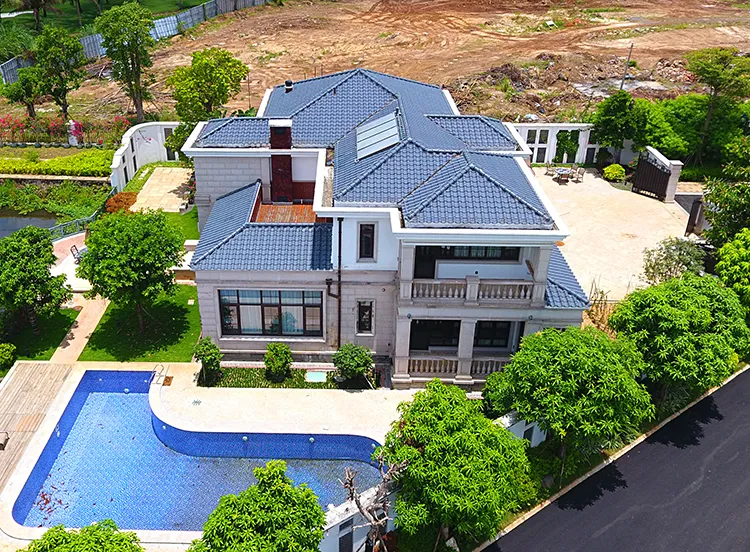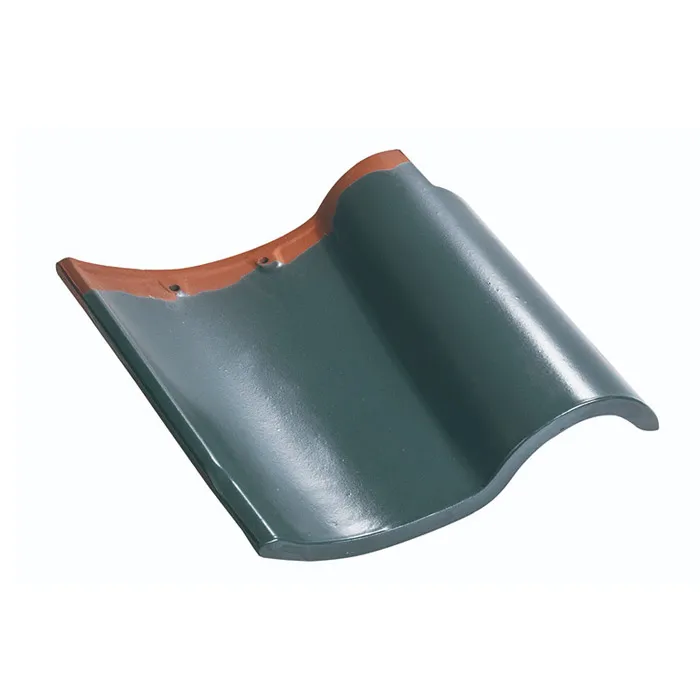As a traditional material widely used in the construction industry, clay roof tiles are deeply loved by owners and architectural designers for their unique beauty, durability and wind and rain resistance. However, like any building material, clay tiles are inevitably affected by climate and temperature changes when facing the natural environment. A common question is: Do clay tiles expand and contract due to environmental changes? If so, what consequences may this expansion and contraction bring?
This article will discuss the physical changes of clay tiles under different environmental conditions, focusing on whether clay tiles will expand and contract due to factors such as temperature and humidity, and explain in detail the impact that these changes may have on building structures and their long-term performance. Through a comprehensive analysis, we will delve into how to prevent and manage these potential risks to ensure the safety and durability of clay tile roofs.

Do clay roof tiles expand and contract?
Any material will expand when heated and contract when cooled, and this basic principle also applies to building materials. Clay tiles are a natural material whose main component is clay minerals, which are formed after high-temperature firing. Although clay tiles have high density and structural stability during the firing process, they are not completely unaffected by the environment, especially when the temperature and humidity change greatly.
1. Thermal expansion coefficient
Different building materials have different thermal expansion coefficients, and clay tiles have a relatively low thermal expansion coefficient. This means that it expands relatively little when heated, especially compared to metal materials or wood. However, despite this, clay tiles still expand and contract slightly under extreme temperature differences.
In the hot summer, the roof is directly exposed to the sun, and the surface temperature may rise sharply. Conversely, in the cold winter, especially at night, the temperature may drop sharply. Such environmental changes will cause the volume of clay tiles to expand and contract slightly. This phenomenon usually does not cause obvious problems in the short term, but long-term repeated expansion and contraction cycles will have a certain impact on the roof structure.
2. The influence of humidity
In addition to temperature, humidity changes are another important factor that affects the expansion and contraction of clay tiles. Clay tiles have a certain degree of water absorption, especially in a humid environment, the tiles will absorb moisture from the air, resulting in a slight change in volume. On the contrary, in a dry environment, the moisture in the clay tiles will evaporate and the volume of the tiles will shrink.
Although the water absorption rate of clay tiles is generally low, especially after high-temperature firing and surface treatment, its water absorption is greatly reduced, but it is still possible to expand due to water absorption when exposed to high humidity for a long time. This expansion is not significant, but over time, it may affect the overall stability of the roof system.

What are the consequences of expansion and contraction of clay tiles?
Although the expansion and contraction of clay tiles is a small and slow process, this phenomenon may have a certain impact on the roof and its structure if it continues for a long time. If not prevented and managed, the expansion and contraction phenomenon may have the following consequences:
1. Tile displacement
Due to the influence of expansion and contraction, the connection between tiles may gradually shift. Clay tiles are usually laid on the roof in an overlapping manner, and the overlap of tiles relies on their own weight and some fixings to maintain stability. Over time, changes in temperature and humidity can cause tiles to move slightly, eventually leading to loose overlaps or even falling off.
Tile shifting increases the risk of roof leaks, especially during stormy weather. Moisture can penetrate the roof through the gaps between shifted tiles, affecting the underlying waterproofing materials and structure, and even causing roof leaks and damaging interior decoration.
2. Roof Leaks
The expansion and contraction of tiles can damage the seal between tiles. Clay tile roofs usually rely on tile overlap and ridge sealing to achieve waterproofing, but when tiles expand or contract, gaps may appear between tiles. Even if these gaps are very small, they are enough to allow rainwater to penetrate into the roof structure.
Especially in rainy seasons or extreme weather conditions, roof leaks can become more serious. If moisture continues to penetrate, the wooden structure under the roof will begin to rot and the waterproofing layer may also be damaged, which is very costly to repair.
3. Cracks and cracks
Although clay tiles have good strength and durability, tiny cracks may form on the surface of the tiles during repeated expansion and contraction, especially in environments with extreme temperature differences. Over time, these cracks may gradually expand and eventually cause the tiles to crack.
Once the tiles are cracked, the waterproof function of the roof will be seriously affected, and the damaged tiles must be replaced in time. Otherwise, rainwater may penetrate the roof through the cracks, causing more serious structural problems.
4. Loose tiles
Due to the tiny displacement of the tiles as they expand and contract, the nails or other fixings that fix the tiles may gradually loosen. Especially in windy areas, strong winds may further aggravate the loosening of the tiles and even lift the tiles off the roof. In this case, not only will the waterproof and insulation functions of the roof be affected, but it may also pose a danger to people and property around the house.
5. Affecting the overall structural stability of the roof
Expansion and contraction not only affect the state of individual tiles, but may also pose a potential threat to the structural stability of the entire roof system. Especially in large buildings or complex roof designs, expansion and contraction may cause uneven stress on different parts of the tiles, leading to more serious structural problems.
For example, some roof areas may be subject to greater thermal expansion and contraction, while other areas are relatively stable. This uneven change may cause slight deformations in the roof's load-bearing structure, which in turn affects the stability and life of the entire roof.

How to deal with the expansion and contraction of clay tiles?
Although the expansion and contraction of clay tiles is an inevitable natural phenomenon, the negative impact of this phenomenon can be effectively reduced through reasonable design, installation and maintenance. Here are some suggestions to ensure that the clay tile roof remains stable and functional during expansion and contraction:
1. Reasonable installation method
During the installation of clay tile roofs, ensure that the gaps and overlaps between tiles are reasonable, which can reserve enough space for the expansion and contraction of tiles. During construction, the specifications should be strictly followed to ensure that each tile can be firmly installed while allowing moderate free movement.
In addition, it is also very important to use suitable fixing materials and methods. The fixtures of the tiles should be flexible enough to provide a certain elastic support when the tiles expand or contract without causing the tiles to break or loosen.
2. Regular inspection and maintenance
Regular inspection and maintenance of clay tile roofs can detect and repair problems caused by expansion and contraction in a timely manner. For example, check whether the tiles are cracked, damaged or shifted, and ensure that the gutters and drainage systems are unobstructed to prevent moisture from accumulating on the roof.
If the tiles are found to be damaged or the fixtures are loose, they should be repaired or replaced in time to avoid further deterioration of the problem.
3. Use high-quality clay tiles
Choosing high-quality, strictly processed clay tile products can effectively reduce the negative effects of expansion and contraction. High-quality clay tiles usually have lower water absorption and stronger weather resistance, and can better withstand environmental changes.
At the same time, some clay tile products are also specially surface treated to perform well in preventing moisture penetration and weathering, which helps to extend the service life of the roof.

Rongguan stands out in the competitive building materials market for our innovative designs and customer-focused solutions. From terrazzo flooring to quartz countertops, our products are manufactured with precision and offered at factory-direct prices. Contact us today for exclusive quotes and discounts on bulk orders.

